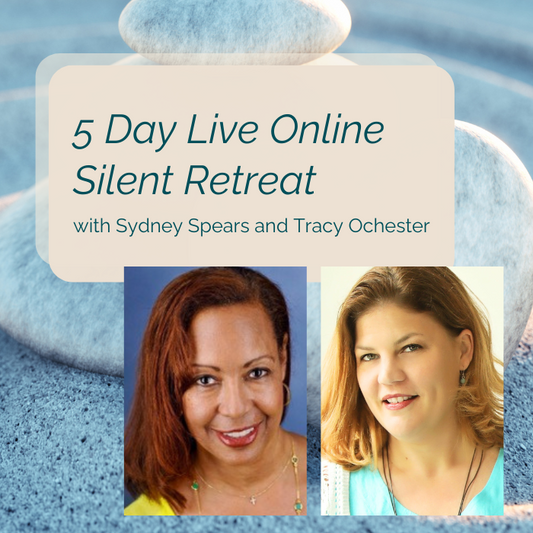This fall my co-teacher Chris Checkett and I decided to try replacing the handouts booklet with the brand new Mindful Self-Compassion Workbook (“the workbook”) for our most recent 8-week course. The book had been out for only a few weeks when our course began, and we hadn’t familiarised ourselves with it in any depth, but we’d looked at it closely enough to think that we could make it work. I confess that I felt some impostor-phenomenon trepidation: this time, I found myself thinking, the participants would see that when I’m leading, none of the deep insights or beautiful phrasings are mine…. Unmasked, finally! Like a good MSC teacher I simply buried those misgivings (🙂), and we took the plunge. We were very glad we did. We integrated the workbook into the course via two emails we sent out after every session: a “home practice” email and a “recommended reading” email, both of which directed participants to various parts of the workbook. I’ll begin by describing some of the payoffs, both for us as teachers and for our participants, and then go into a bit more detail about how the emails worked.
Less pressure on teachers, more reinforcement for participants
One of the biggest advantages for me of using the workbook was that it took some of the pressure off when I was presenting topics. I found that I was less likely to get anxious about making sure I’d said everything I needed to say, because I knew that people would be able to read up on anything they were confused about, or especially interested in, after the session. Of course, we’ve always had the chapter guides for Chris’s and Kristin’s earlier books, and I’ve always used those in my teaching, but the workbook connects much more tightly and straightforwardly to the conceptual material as it’s covered in the sessions of the course. And I knew we’d be pointing our participants to the relevant parts of the workbook in our recommended-reading email each week, which made it easy for participants who were so inclined to reinforce what they’d learned in the sessions at home. (We also had an online discussion board for questions, as well as time after the sessions and the option of email.) The effect was to make teaching the topics more enjoyable, and that, naturally, had a direct impact on the feel of the sessions. I know that the idea has always been that we shouldn’t worry about covering everything when presenting a topic, but that was always a “growth area" for me…. In this respect your mileage, as they say, may vary.
Streamlined administrative load
Writing the “recommended reading” emails was a fair amount of work, admittedly—more on those below—but having done it once, I now have a set of templates that will need only minor tweaking for future runs. And my home-practice emails will need much less tweaking from run to run than they did when I was using the handouts booklet. I’ve always wanted to make it as easy as possible for people to follow up on the home-practice recommendations for the week, and so I’ve always put page numbers into the emails and online announcements. Those page numbers would then need to be updated every time a new edition of the handouts booklet came out, along with the titles of the practices in some cases. But on the assumption that new editions of the workbook will come out less often than once a year (🙂), using the workbook means that updating the weekly announcements and emails from course to course will take a lot less work. (Incidentally, all this goes for our online course announcements, too. We use a beautifully simple web-based app called Basecamp as a central repository for announcements and course materials, but we also send out everything crucial by email, to keep things easy for those people who’d rather not engage with Basecamp.)
More comprehensive coverage of missed sessions
One final, relatively obvious advantage of using the workbook: people who miss a session can make up for a lot more of what they missed. When someone missed a session, I gently upgraded the status of the reading for that week from “recommended but optional” to “a very good idea, both so that you don’t miss out on the valuable ideas and practices we covered in the session, and so that you’re prepared for later sessions.” I also recommended that they do all the exercises in the reading that we’d done in the session, modulo the usual caveats about safety, overwhelm, and so on. One worry related to this last advantage might be that having the workbook would encourage absenteeism, as people would think that they could always just make up for missing a session by working through the relevant parts of the workbook. For what it’s worth, though, our one run of the course with sixteen participants provided no evidence to support that worry—our absenteeism rates were no higher than with the handouts booklet.
The weekly emails
Email 1: summary of home practices As I mentioned, in addition to reminding people of the home-practice recommendations for the week, we provided page numbers to help participants find the instructions for the practices in the workbook, along with links to guided versions of the meditations and the like. In almost all cases, the instructions given for the home practices in the workbook fit seamlessly into the 8-week course. Very occasionally, we’d need to point out some way in which the instructions in the workbook should be modified for home practice as part of the 8-week: doing “Silver Linings” for a current difficulty as an optional extra, for example, or adapting “Working with Difficult Emotions” and “Meeting Unmet Needs” to the flow of daily life, so that participants weren’t sitting down to evoke difficult feelings deliberately every day between sessions. Email 2: recommended reading After a reminder that the reading is recommended but optional, I’d list the chapters relevant to the session we’d just had, and give a one- or two-sentence summary of what each one covers, to make it easier for people to find things they might be looking for. Then I’d recommend an approach to the practices contained in the reading. (I’m using the word ‘practices’ as a catchall for exercises, meditations, and informal practices.) Some of the practices covered in the reading were home practices for the week, of course, and so they’d already been discussed in the home-practice email. Some weren’t home practices, but were practices we’d done in the session; I’d tell people they should feel free to revisit those if they’d like, but make it clear that they didn’t have to, and remind them to move gently (if at all) with the more activating practices. And then there were some new practices that weren’t amongst the home practice recommendations, and weren’t in the session (e.g., “Compassionate Mess” or “Fierce Compassion”). What I said about those would depend on the practice, but in general the approach was to invite people to try them if they’d like to, whilst making it clear that the recommended home practices for the week were the first port of call, and, as always, gently reminding people to go easy on themselves, allow themselves to be slow learners, and so on.
The "good students”: noticing participants' impulse to strive
The only disadvantage of using the workbook—or at least, of using it in the way we did—was that participants who began the course striving to be “good students,” or who were determined to fix themselves by working hard at becoming more self-compassionate, were perhaps more likely to feel overwhelmed, or feel bad about falling behind. Despite our regular and emphatic reminders that the reading was entirely optional, there were of course those participants who’d decided that it wasn’t really okay for them not to do it, or not do all of it. It seemed to me that there was a bit more of that this time than in previous runs, when I’d simply list Chris’s and Kristin’s books as optional further resources and make the chapter guides available. That’s not surprising, given that we handed out copies of the workbook in the first session, and then sent out relatively detailed (optional!) reading recommendations every week. But it’s something I’ll keep an eye on next time around. And maybe I’ll call them “optional reading” emails instead.
Unfounded fears? Who, me?
As for those impostor worries, it seems I had nothing to fear. It wasn’t something I really thought about once the course was underway, and our participants were as appreciative as ever when the course ended. But perhaps that’s because I told them I was Chris Germer. 😊▸ Resources:
- Email Template #1 (home practice)
- Email Template #2 (recommended reading)
- Basecamp 2 (Central repository for meditations, handouts, and resources + discussion forum)
- The Mindful Self-Compassion Workbook
- Guilford Order Page for the MSC Workbook
- MSC Participant Handouts Booklet (available in the new year).





